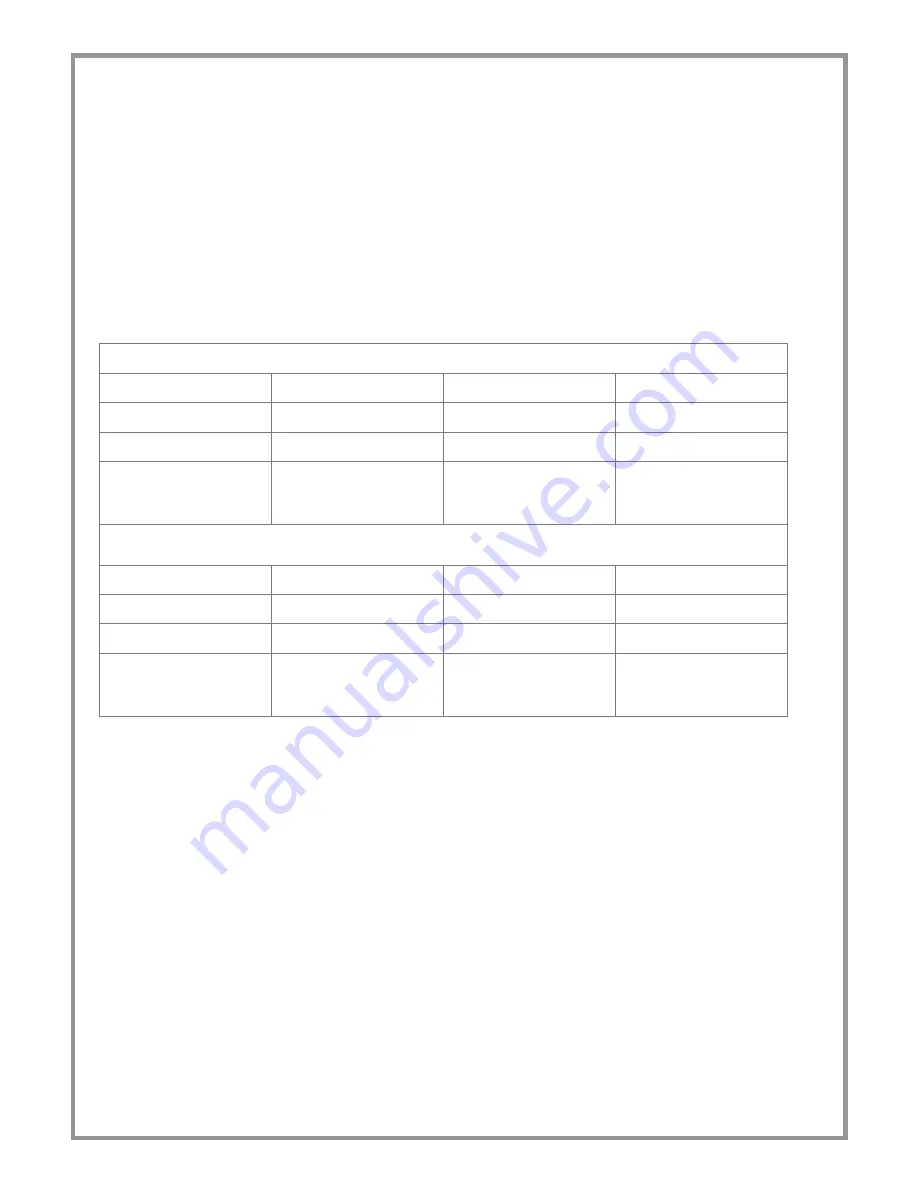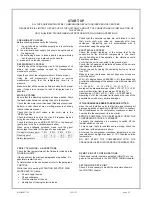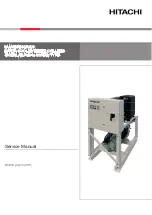
M03I40M7-03 15/11/07
page
39
REFRIGERANT TABLES
THIS SECTION IS DEVOTED ONLY TO QUALIFIED TECHNICIANS THAT KNOW THE FOLLOWING:
•
THE OPERATIONAL PRINCIPLES OF THE REFRIGERATING CIRCUIT OPERATION
•
THE MODES OF DETECTING TEMPERATURE AND PRESSURE
•
THE RISKS RELEVANT TO THESE OPERATIONS
The data of the tables allow the testing of the refrigerating
circuit operation by the detection of a few objective
parameters.
The data are significant if they are detected
simultaneously and while the refrigerating circuit is
running.
•
Liquid temperature
•
Return pressure
•
Return temperature
•
Condensing pressure
OVERHEATING
= return temperature – Saturation temperature
R22 R407C
R410A
Return pressure
3.8 bar
3.8 bar
7.2 bar
Return temperature
7.3 °C
7.3 °C
7.3 °C
overheating
7.3 – ( - 1.13 ) =
8.43
°C
1.3 – 1.18 =
6.12
°C
for calculation consider the Td
(dew point)
7.3 – 0.8 =
6.5
°C
SUBCOOLING
= condensing temperature (pressure *) – liquid temperature
R22 R407C
R410A
Condensing pressure
18.6 bar
18.6 bar
29.6 bar
Liquid temp.
42.9 °C
42.9 °C
45 °C
subcooling
50.39 – 42.9 =
7.49
°C
44.74 – 42.9 =
1.84
°C
for calculation consider the Tb
(bubble point)
49.91 – 45 =
4.91
°C
* It is important that the condensation pressure is detected as close as possible to the point where the liquid temperature is
detected, in the event that the calculation will be effected by the losses of charge (and, therefore, of temperature) caused by
the refrigerating circuit components placed between the two measurement points.
For R410A the glide was not considered, since it is close to 0.
The values in the tables refer to a specific refrigerant supplier; slight differences are possible with other suppliers.
Pg = P gauge = relevant pressure (read on the pressure
gauge)
Ts : saturation pressure
Td = dew point temperature
Tb = bubble point temperature
















































